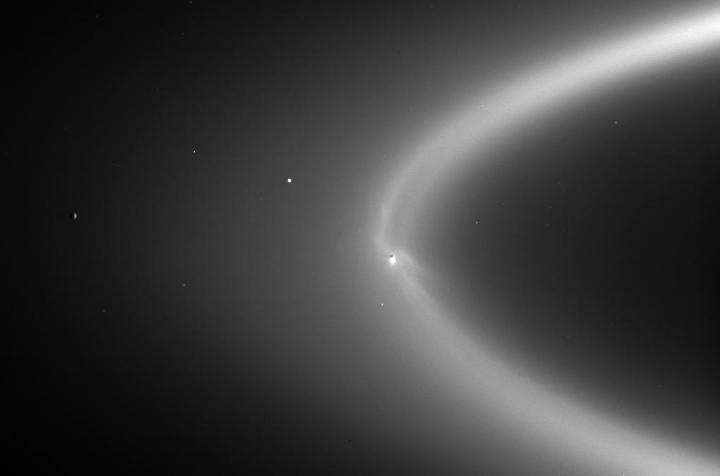We could find signs of life on another world on Saturn’s moon Enceladus, scientists say
Spacecraft could fly through large plumes spewing out of distant world – and catch evidence of alien biology

Your support helps us to tell the story
From reproductive rights to climate change to Big Tech, The Independent is on the ground when the story is developing. Whether it's investigating the financials of Elon Musk's pro-Trump PAC or producing our latest documentary, 'The A Word', which shines a light on the American women fighting for reproductive rights, we know how important it is to parse out the facts from the messaging.
At such a critical moment in US history, we need reporters on the ground. Your donation allows us to keep sending journalists to speak to both sides of the story.
The Independent is trusted by Americans across the entire political spectrum. And unlike many other quality news outlets, we choose not to lock Americans out of our reporting and analysis with paywalls. We believe quality journalism should be available to everyone, paid for by those who can afford it.
Your support makes all the difference.Scientists should be able to retrieve signs of life on Saturn’s moon Enceladus, according to a new study.
Enceladus has long attracted scientists searching for life elsewhere in our solar system. The ocean world covered in an icy crust has water, energy and organic material, leaving some to speculate that it could be the best hope for life in our celestial neighbourhood.
One hope is that signs could be detected in the ice plumes that spew out from its surface, at roughly 800 miles per hour. They mean that a spacecraft would not need to bury beneath its icy outer crust, but could instead simply fly past Enceladus and sample some of that plume.
Nasa managed to do that with its Cassini spacecraft, which first discovered the details of those plumes during a 20 year mission that concluded in 2017. But scientists feared that actually catching details of alien life in those plumes might be impossible, fearing that the organic compounds in the icy grains would be broken up by the speed of the plumes.
A new study suggests otherwise, however. Research indicates that amino acids carried in those icy plumes would be able to withstand being carried in plumes ten times as fast as those coming from Enceladus.
The work was conducted by researchers from the University of California San Diego who were able to use a system called an aerosol impact spectrometer. That allows researchers to see how aerosols and particles behave at high speeds – and while it wasn’t built to understand these kind of plumes, it was perfect for the task.
“This apparatus is the only one of its kind in the world that can select single particles and accelerate or decelerate them to chosen final velocities,” said Robert Continetti, the professor who led the work. “From several micron diameters down to hundreds of nanometers, in a variety of materials, we’re able to examine particle behavior, such as how they scatter or how their structures change upon impact.”
The findings are reported in a new paper, ‘Detection of intact amino acids with a hypervelocity ice grain impact mass spectrometer’, published in the journal Proceedings of the National Academy of Sciences.
Join our commenting forum
Join thought-provoking conversations, follow other Independent readers and see their replies
Comments